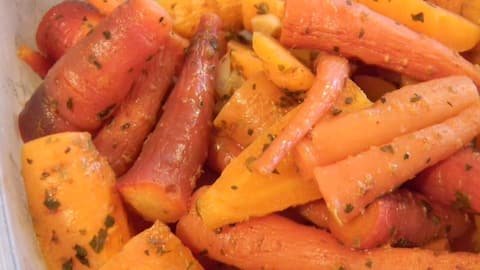Sous vide: Guide to understanding precision cooking
What's the story
Cooking has evolved over the centuries, with techniques and technology constantly shaping the way we prepare and savor our meals. Among the culinary innovations of recent times, "sous vide" which translates to "under vacuum" in French stands out as a method that combines precision, flavor enhancement, and consistency. Let's delve into the art and science of sous vide cooking, exploring what makes it unique.
Explainer
Understanding sous vide cooking
Sous vide, with its meticulous temperature control, guarantees uniformly cooked meals. This method involves vacuum sealing ingredients in a plastic pouch and submerging them in a precisely controlled water or steam bath at a temperature lower than traditional cooking methods. This preserves the natural flavors, moisture, and nutrients of food often compromised in conventional cooking approaches, with the sealed pouch preventing moisture loss.
Healthy or not
Is sous vide healthy?
Sous vide cooking stands out as a health-conscious method for home chefs, using minimal oil. Its distinctive process retains nutrients and flavors, yielding tasty and nutritious results. Compared to traditional methods, sous vide's sealed plastic packaging prevents flavor loss and maintains a higher percentage of vitamins and nutrients. The precise temperature control minimizes vitamin and mineral loss associated with traditional high-heat cooking.
Vegetable
Ideal for vegetables
Sous vide cooking is particularly well-suited for vegetables. By sealing them in plastic bags, evaporation is eliminated, intensifying the natural flavors. It ensures that potatoes taste more distinctly like potatoes, and asparagus maintains its authentic asparagus flavor. The precise water bath allows for cooking green vegetables to a crisp-tender texture. Additionally, root vegetables can be uniformly cooked to perfection, achieving ideal tenderness throughout.
Precautions
Is sous vide safe?
Critics argue that the extended cooking times in sous vide may create a larger window for food contamination. Without proper training, there is a risk of bacterial growth. It is crucial to be aware of these risks before attempting sous vide at home. Use proper sous vide equipment and heat-resistant plastics designed to endure high temperatures to reduce the likelihood of bacterial issues.
